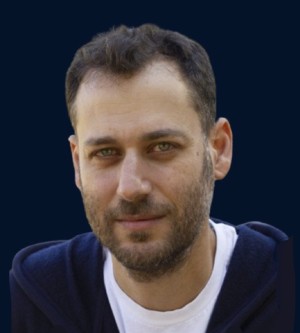- Video Library
- Tamir Wolf Presents Theator at LSI USA '23
Tamir Wolf Presents Theator at LSI USA '23

Tamir Wolf
Dr. Tamir Wolf is the CEO and Co-founder of Theator, the Surgical Intelligence platform that allows surgeons to achieve peak surgical performance with an innovative platform built for surgeons, by surgeons, to create actionable and accessible surgical data, and use it to comprehensively analyze patient outcomes, improving surgical decision-making, boosting surgeon performance and the quality of patient care. Dr. Wolf was the valedictorian of his class at Technion, the Israel Institute of Technology where he earned his MD, PhD in Medicine, specializing in Cardiovascular Physiology. He was a Lieutenant commander in the Israeli Navy SEALs, where he served as the Head of the Unit’s Medical Branch and earned a medal of distinguished service during the 2nd Lebanon War for treating wounded soldiers under fire. Following his stint in the army, he was drawn towards a career in health technology, in part due to technology’s power to impact the lives of billions. As such, in 2013 he was the Founder and CEO of Digma Medical – a company that pioneered a new path for treating Type 2 Diabetes – as well as the Co-founder of NiTiNOTES Surgical – a company that develops safe, effective and long-lasting minimally invasive solutions for treating obesity.
Tamir Wolf
Dr. Tamir Wolf is the CEO and Co-founder of Theator, the Surgical Intelligence platform that allows surgeons to achieve peak surgical performance with an innovative platform built for surgeons, by surgeons, to create actionable and accessible surgical data, and use it to comprehensively analyze patient outcomes, improving surgical decision-making, boosting surgeon performance and the quality of patient care. Dr. Wolf was the valedictorian of his class at Technion, the Israel Institute of Technology where he earned his MD, PhD in Medicine, specializing in Cardiovascular Physiology. He was a Lieutenant commander in the Israeli Navy SEALs, where he served as the Head of the Unit’s Medical Branch and earned a medal of distinguished service during the 2nd Lebanon War for treating wounded soldiers under fire. Following his stint in the army, he was drawn towards a career in health technology, in part due to technology’s power to impact the lives of billions. As such, in 2013 he was the Founder and CEO of Digma Medical – a company that pioneered a new path for treating Type 2 Diabetes – as well as the Co-founder of NiTiNOTES Surgical – a company that develops safe, effective and long-lasting minimally invasive solutions for treating obesity.

17011 Beach Blvd, Suite 500 Huntington Beach, CA 92647
714-847-3540© 2025 Life Science Intelligence, Inc., All Rights Reserved. | Privacy Policy







